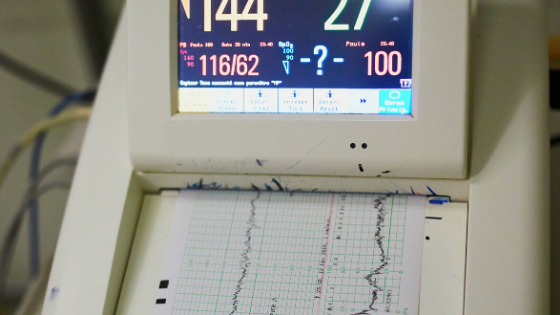During the remarkable journey of pregnancy, expectant mothers and healthcare providers alike seek reassurance about the well-being of the developing fetus. Two non-invasive fetal monitoring techniques, the non-stress test (NST) and the cardiotocogram (CTG), play crucial roles in assessing fetal heart rate variability and providing valuable insights into fetal health.
NST: A Measure of Fetal Reactivity
The NST, an acronym for non-stress test, is a simple yet effective method for evaluating fetal well-being. It measures fetal heart rate variability in response to fetal movements, providing an indirect assessment of fetal oxygen supply and overall health.

During an NST, two belts are placed around the mother’s abdomen, one to monitor fetal heart rate and the other to detect fetal movements. The test typically lasts for 20-30 minutes, and the mother is encouraged to move around and drink fluids to stimulate fetal activity.
CTG: A Continuous Record of Fetal Heart Rate and Uterine Contractions
The CTG, also known as cardiotocography, provides a continuous record of fetal heart rate and uterine contractions. It offers a more comprehensive assessment of fetal well-being by monitoring fetal heart rate patterns, baseline variability, and accelerations and decelerations in response to fetal movements and contractions.

A CTG monitor displays fetal heart rate as a trace on a graph, along with a separate trace indicating uterine contractions. The CTG is typically used during labor and delivery to monitor fetal status and detect potential complications.
Key Distinctions: NST vs. CTG
The primary distinctions between NST and CTG lie in their purpose and timing:
Purpose: NST assesses fetal reactivity in response to fetal movements, while CTG provides a continuous record of fetal heart rate and uterine contractions.
Timing: NST is typically performed during the third trimester, while CTG can be used throughout pregnancy, during labor and delivery, and in the post-partum period.
Interpreting the Results: A Collaborative Effort
Interpreting NST and CTG results requires careful consideration of fetal heart rate patterns, baseline variability, accelerations, and decelerations. Healthcare providers assess these factors in conjunction with other clinical information, such as maternal health, gestational age, and fetal movements.
A reactive NST indicates that the fetal heart rate increases in response to fetal movements, suggesting adequate fetal oxygen supply and overall well-being. A non-reactive NST may not necessarily indicate fetal distress but may require further evaluation.
CTG interpretation is more complex, requiring the assessment of various parameters and their interplay. Healthcare providers analyze fetal heart rate patterns, baseline variability, accelerations, and decelerations to determine fetal health and identify potential complications.
Conclusion: Safeguarding Fetal Well-being
NST and CTG, though distinct in their approach, serve as valuable tools in safeguarding fetal well-being. By monitoring fetal heart rate and assessing reactivity, these techniques provide crucial insights into fetal health, allowing healthcare providers to make informed decisions and intervene promptly when necessary. As technology advances, fetal monitoring techniques continue to evolve, offering even more precise and comprehensive assessments of fetal well-being, empowering expectant mothers and healthcare providers to safeguard the miracle of life.